
Station Name: WARRINGTON BANK QUAY
|
| Date opened: | 16.11.1868 |
| Location: | West of the junction of Parker Street and Wilson Patten Street |
| Company on opening: | London & North Western Railway |
| Date closed to passengers: | 14.6.1965 |
| Date closed completely: | 14.6.1965 |
| Company on closing: | British Railways (London Midland Region) |
| Present state: | Demolished |
| County: | Lancashire |
| OS Grid Ref: | SJ600878 |
| Date of visit: | 13.3.2005, 10.4.2005 & 8.3.2012 |
Notes: The Warrington Bank Quay is located on the west side of the town from which it takes its name at the point where the former London & North Western Railway (LNWR) main line between London and Scotland running north/south (the present day West Coast Main Line) passed over the former St Helens Canal and Railway Company (SHC&RC) line between Garston and Warrington Arpley running west/east. At Arpley an end on connection with the Warrington and Stockport Railway created a through route between Garston and Manchester. The main line had opened on 4 July 1837 as part of the Grand Junction Railway. The SHC&RC line opened as far as Arpley on 1 May 1854 having reached a temporary terminus at Whitecross (west of Bank Quay) on 1 February 1853.
The LNWR had gained effective control of the SHC&RC line by 1860 absorbing it formally on 29 July 1864. By this time the SHC&RC line was part of a through route between Liverpool and Manchester.
Warrington Bank Quay station had four through platforms on the main line with bays at each end. The main entrance was on the east side of the line. It was a large single storey brick building with a slate roof. The main line was elevated and the building was at street level. A subway ran under the main line and connected the platforms. On the former SHC&RC line which began to be referred to from this time as the 'low level line' (which it is still referred to as today). two through platforms were provided. At the east end of the up platform (Manchester direction) there was a bay platform that faced towards Manchester. The platforms were numbered 5 (the down platform), 6 (the up platform) and 7 (the bay platform). Collectively they were called the low level platforms but that was never an official title for the station.
Although some longer distance trains served Warrington Bank Quay Low Level the majority were local services. The December 1895 time table showed a good service from the low level platforms of fifteen up and eleven down trains on weekdays as shown in the table below. On Sundays there were three up and three down services.
By July 1922 the service remained at fifteen up and eleven down Mondays to Fridays as shown in the table below. On Sundays there were two up and three down trains.
On 1 January 1923 Warrington Bank Quay became part of the London Midland and Scottish Railway (LMS). The LMS summer timetable for 1932 had fifteen up trains and thirteen down on weekdays with extra Saturday trains. On Sundays there were three up and four down trains. On 1 January 1948 the station became part of the British Railways (London Midland Region). In the first year of nationalisation the low level service had reduced to twelve up and only five down services between Monday and Friday with a couple of extra workings on Saturdays. There was only one train on Sundays which ran to York and departed at midnight. By October 1956 the service had reduced even further with only eight up and five down Mondays to Fridays. An extra up train ran on Saturdays. The Sunday midnight York train also continued to run.
In 1959 the London Midland Region published a list of passenger services that it wished to withdraw and it included the trains that served Warrington Bank Quay low level. The timetable for the 18 June to 9 September 1962 showed only six up and three down trains running from the low level platforms Monday to Friday with an extra train on Saturdays. as shown in the table below. No westbound trains went direct to Liverpool Lime Street and the Manchester terminus had become Manchester Oxford Road. The midnight Sunday York train was still running.
With a service as poor as that shown above it was little surprise that passenger numbers in 1962 were very low and many trains ran almost empty. The service was withdrawn on 10 September 1962 the last trains having run on Saturday 8 September 1962. The low level platforms at Warrington Bank Quay remained open as the Sunday York train continued to run. Only the up through platform saw regular use though. Rugby specials also called at the station. The last York train called at midnight on 17 July 1965. The following week it was diverted to run via another route and the low level platforms at Bank Quay closed. They had been demolished by the end of the 1960s.
The line closed as a through route when the section between Latchford (east of Arpley) and Skelton Junction was taken out of use on 7 July 1985. A bridge over the Manchester Ship Canal was deemed to be in urgent need of repair and the costs would have been very high. British Rail decided to close the line instead of carrying out the repairs. From warrington to Garston the line remained open and it was still a busy freight route in 2012 by which time the site of the low level platforms had become a locomotive crew changeover point. Warrington Bank Quay station continued to serve the West Coast Main Line but its main building was demolished and replaced with a modern structure in the early 1970s. Tickets by Michael Stewart and route map by Alan Young.
To see the other
stations on the Garston and Warrington railway click
on the station name: Garston Dock, Speke, Halebank, Ditton, Ditton Mill, Widnes (1st), Widnes South, Cuerdley, Fidlers
Ferry & Penketh, Sankey
Bridges & To see stations on the Warrington and Stockport railway click on the station name: Latchford, Thelwall, Lymm, Heatley &
Warburton, |
bank_quay_low_level.jpg)
Photo from John Mann collection
bank_quay_low_level.jpg)
Photo by Peter A Norton from David Long’s Flickr photostream

Photo from the Les Fifoot collection
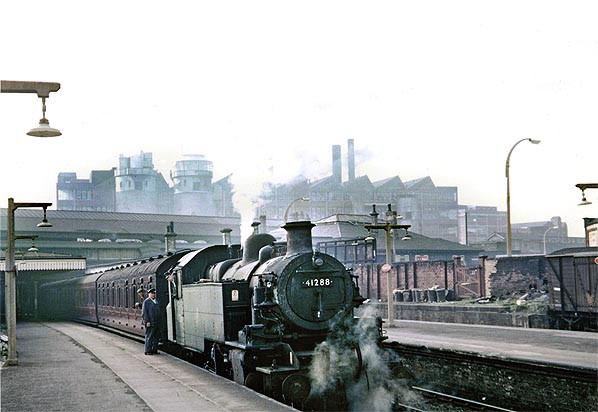
Photo from the Les Fifoot collection
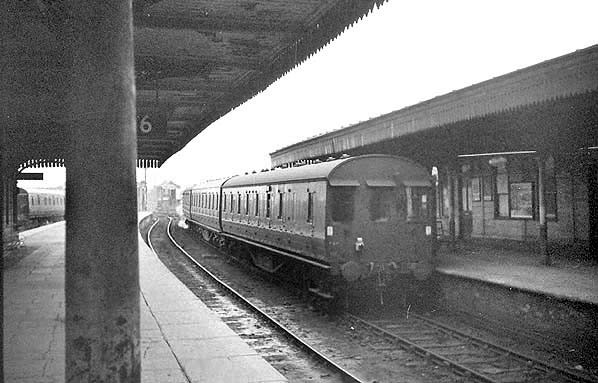
Photo by Bevan Price
bank_quay_low_level.jpg)
In the early 1960s a BR Standard Class 9F locomotive hauls a train of empty coal wagons through the Warrington Bank Quay low level platforms probably on route to the Yorkshire coal field.
Photo by E N Bellas

Empty MGR coal wagons are seen passing through the site of Warrington Bank Quay stations low level platforms hauled by a BR class 47 locomotive in the 1970s.
Photo by Ted Baxendale from the Kerry Parker Flickr photostream

Warrington Bank Quay low level site looking west in January 1998. Class 31 locomotive number 31 434 heads towards Warrington Arpley with four wagons from the Salt Union works at Folly Lane Runcorn
Photo by Terry Callaghan from his Flickr photostream
.jpg)
A view looking west at the site of the Warrington Bank Quay low level platforms on 8 March 2012.
Photo by Paul Wright
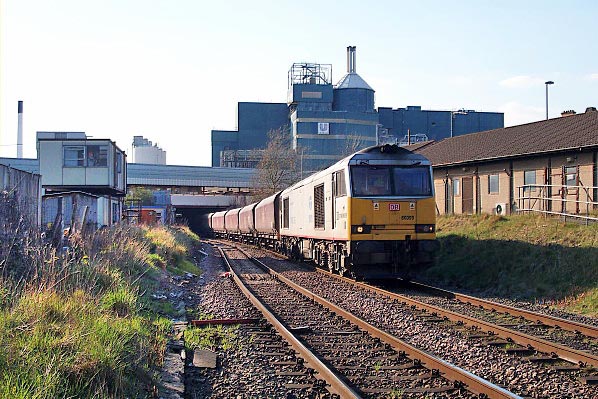
The site of Warrington Bank Quay low level platforms looking west and seen from a point that would have been at the east end of the down platform on 5 April 2012.
Photo by Stuart Daniels from his Flickr photostream
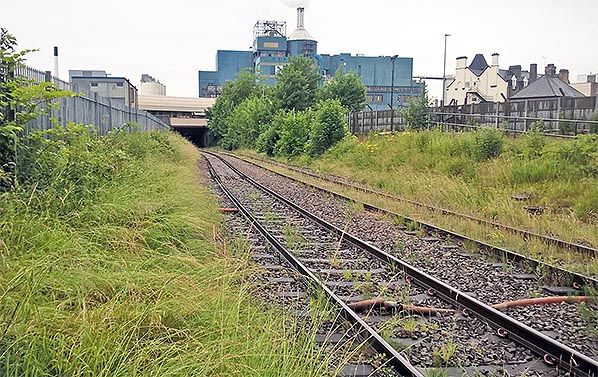 The site of Warrington Bank Quay low level platforms looking west in June 2017.
The site of Warrington Bank Quay low level platforms looking west in June 2017.Photo by Allen Peter
| Last updated: Thursday, 29-Jun-2017 13:50:44 CEST |
© 1998-2012 Disused Stations
|

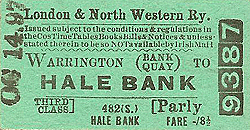

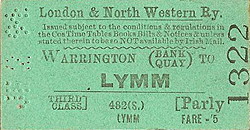


.gif) Warrington Bank Quay station as it was in 1893. Click
Warrington Bank Quay station as it was in 1893. Click 


.jpg)

.jpg)

 Home Page
Home Page